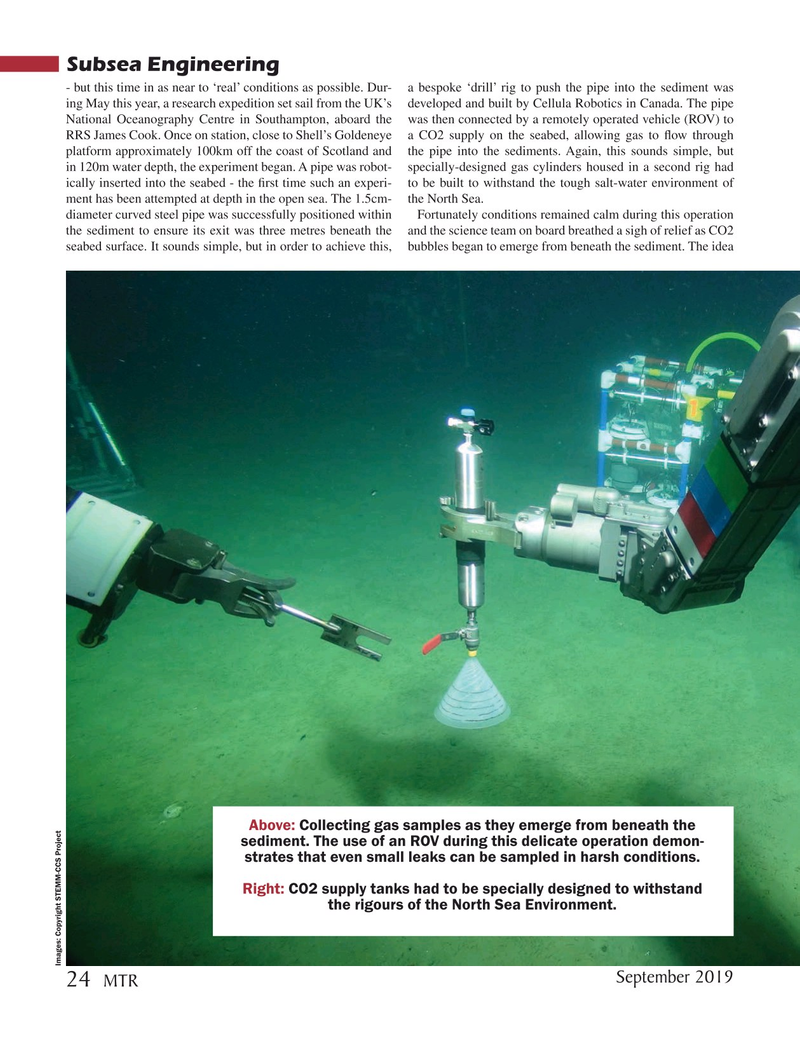
Page 24: of Marine Technology Magazine (September 2019)
Autonomous Vehicle Operations
Read this page in Pdf, Flash or Html5 edition of September 2019 Marine Technology Magazine
Subsea Engineering - but this time in as near to ‘real’ conditions as possible. Dur- a bespoke ‘drill’ rig to push the pipe into the sediment was ing May this year, a research expedition set sail from the UK’s developed and built by Cellula Robotics in Canada. The pipe
National Oceanography Centre in Southampton, aboard the was then connected by a remotely operated vehicle (ROV) to
RRS James Cook. Once on station, close to Shell’s Goldeneye a CO2 supply on the seabed, allowing gas to ? ow through platform approximately 100km off the coast of Scotland and the pipe into the sediments. Again, this sounds simple, but in 120m water depth, the experiment began. A pipe was robot- specially-designed gas cylinders housed in a second rig had ically inserted into the seabed - the ? rst time such an experi- to be built to withstand the tough salt-water environment of ment has been attempted at depth in the open sea. The 1.5cm- the North Sea. diameter curved steel pipe was successfully positioned within Fortunately conditions remained calm during this operation the sediment to ensure its exit was three metres beneath the and the science team on board breathed a sigh of relief as CO2 seabed surface. It sounds simple, but in order to achieve this, bubbles began to emerge from beneath the sediment. The idea
Above: Collecting gas samples as they emerge from beneath the sediment. The use of an ROV during this delicate operation demon- strates that even small leaks can be sampled in harsh conditions.
Right: CO2 supply tanks had to be specially designed to withstand the rigours of the North Sea Environment.
Images: Copyright STEMM-CCS Project
September 2019 24 MTR
MTR #7 (18-33).indd 24 9/6/2019 10:41:37 AM

 23
23

 25
25
